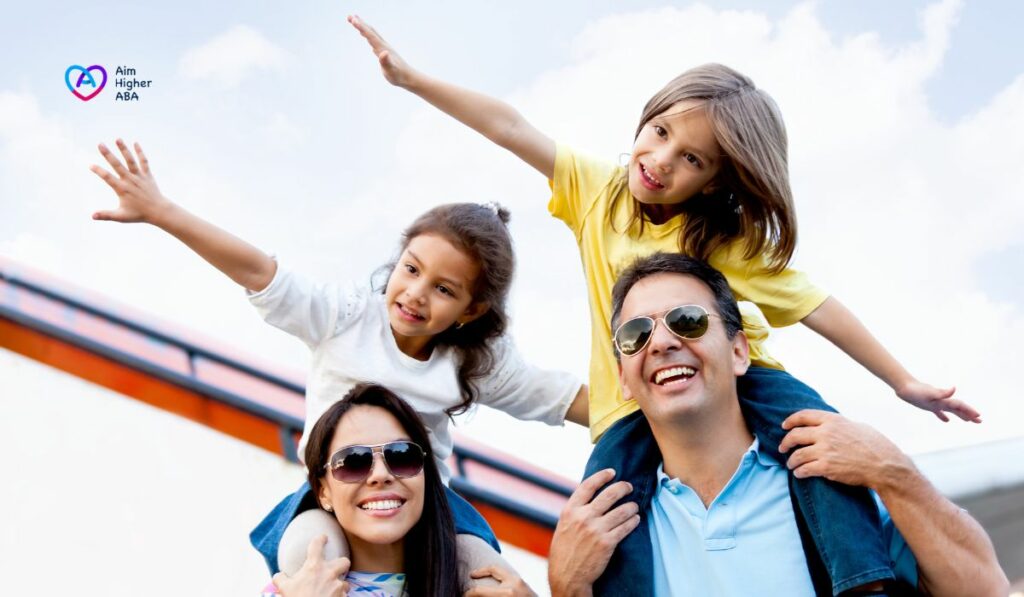Traveling can be a rewarding experience for individuals and families alike. However, for those with autism, it can also present unique challenges that require careful planning and consideration. Understanding these challenges and implementing effective strategies can make all the difference in ensuring a stress-free and enjoyable travel experience. Suppose you’re in Atlanta, GA, and seeking specialized support, exploring ABA Therapy in Atlanta, GA. In that case, services can provide valuable resources and guidance to help individuals with autism navigate the complexities of travel and adapt to new environments with greater ease.
Planning Ahead
Before embarking on any journey, thorough planning is essential for individuals with autism and their families. This goes beyond just picking a destination; it involves meticulous research and preparation to ensure a smooth and enjoyable experience. One of the first steps is to thoroughly research potential destinations and accommodations to ensure they are autism-friendly. This includes checking for receptive-friendly features such as quiet rooms, low-light areas, and accommodations for dietary restrictions if necessary.
Another crucial aspect of planning is creating a detailed itinerary. This itinerary should not only include sightseeing activities and attractions but also take into account the need for structured routines and breaks. Planning meals and rest periods can help individuals with autism maintain a sense of predictability and stability throughout the trip, reducing the likelihood of meltdowns or receptive Overload.

Communication and Preparation
Effective communication with travel providers is paramount to ensuring that the unique needs of individuals with autism are adequately addressed. This entails proactive engagement with airlines, hotels, tour operators, and other relevant parties to communicate any special requirements or accommodations necessary for a smooth and comfortable travel experience.
When contacting travel providers, it’s important to clearly articulate the specific needs of the individual with autism, such as receptive sensitivities, dietary restrictions, or mobility challenges. Providing detailed information allows providers to make appropriate arrangements and accommodations to meet those needs.
Packing Essentials
When preparing for a trip with someone who has autism, packing requires careful consideration to ensure that all essential items are included. Creating a comprehensive checklist can be immensely helpful in ensuring that nothing important is overlooked.
First and foremost, it’s essential to pack comfort items that are familiar and comforting to the individual with autism. These may include favorite toys, stuffed animals, or blankets that provide a sense of security and familiarity, especially in unfamiliar surroundings. Having these items readily available can help ease anxiety and provide comfort during periods of stress or transition.
Transportation Considerations
Selecting the appropriate mode of transportation is critical to planning a successful journey, particularly for individuals with autism. While flying is a common choice for travel, it may present challenges for some individuals due to the crowded and noisy environment of airports and airplanes. In such cases, exploring alternative transportation options such as train or car travel may offer a more comfortable and manageable experience.
Train travel, for example, often provides more spacious and less crowded environments compared to airplanes, making it a preferable option for individuals who are sensitive to receptive stimuli or prone to anxiety in crowded spaces. Additionally, the ability to move around freely and access amenities such as restrooms and dining cars can enhance comfort and convenience during the journey.
Managing receptive Overload
Individuals with autism often experience receptive Overload, which can pose significant challenges, particularly in unfamiliar environments. Receptive Overload occurs when the receptive input overwhelms the brain’s ability to process and regulate stimuli effectively. Common triggers include loud noises, bright lights, strong smells, and crowded or chaotic spaces.
One key strategy for managing receptive Overload is to identify potential triggers and take proactive steps to avoid or minimize exposure to them whenever possible. This may involve researching and planning activities and destinations that are known to be receptive-friendly, such as quiet parks or museums with designated quiet spaces.
Creating a Safe Space
Finding quiet areas or safe zones where individuals with autism can retreat and decompress is essential during travel. This ensures that they have a refuge from potentially overwhelming stimuli and can recharge as needed. One effective strategy is to seek out designated receptive rooms or quiet corners in airports, hotels, or other public spaces.
Many airports and hotels now offer receptive-friendly amenities, including dedicated receptive rooms equipped with comfortable seating, dim lighting, and calming receptive activities such as bubble walls or tactile surfaces. These spaces provide individuals with autism a reprieve from the hustle and bustle of travel and allow them to relax and self-regulate in a soothing environment.
Utilizing Technology
Technology serves as a valuable resource for travelers with autism, offering a range of tools and applications that can enhance the travel experience and support individuals in navigating new environments. Travel apps, in particular, play a significant role in facilitating smoother and more organized journeys by assisting with navigation, communication, and itinerary management.
Navigation apps such as Google Maps or Waze can be invaluable tools for individuals with autism, offering real-time directions and detailed maps to help them navigate unfamiliar streets, public transportation systems, and landmarks. These apps can provide step-by-step guidance, estimated travel times, and alternative routes, empowering individuals to travel independently and confidently.
Flexibility and Patience
Flexibility is paramount when embarking on a journey with someone with autism, as unforeseen changes or disruptions are bound to occur. Being prepared to adapt to new situations and environments with patience and resilience is essential in ensuring a smoother and more enjoyable travel experience for both individuals with autism and their caregivers.
Traveling inherently involves a degree of unpredictability, and individuals with autism may have varying degrees of tolerance for changes to their routines or expectations. Therefore, caregivers must maintain a flexible mindset and be willing to adjust plans or expectations as needed to accommodate the needs and preferences of the individual with autism.
Seeking Support
While navigating the complexities of travel with autism may seem daunting, it’s crucial to recognize that support is readily available for individuals and families embarking on such journeys. Numerous resources and organizations specialize in providing guidance, assistance, and advice tailored to the unique needs of travelers with autism and their families.
One valuable resource for autism-friendly travel is organizations dedicated to promoting inclusivity and accessibility within the travel industry. These organizations work to advocate for the rights and needs of individuals with autism, collaborating with airlines, hotels, and other travel providers to implement autism-friendly policies and accommodations.
Celebrating Achievements

When it comes to traveling with autism, it’s essential to celebrate every success, no matter how small. Each milestone reached during the journey deserves recognition, as it represents a significant accomplishment for individuals with autism and their families. By acknowledging these achievements along the way, caregivers can boost confidence and self-esteem in individuals with autism, reinforcing their sense of accomplishment and resilience.
Positive reinforcement and praise play a crucial role in reinforcing adaptive behaviors and promoting continued growth and development. When individuals with autism successfully navigate challenging situations or demonstrate flexibility and resilience during travel, caregivers need to acknowledge and celebrate these accomplishments.
Conclusion
Traveling with autism presents unique challenges, but with careful planning, preparation, and support, it is possible to enjoy stress-free and rewarding journeys. By implementing the strategies outlined above and advocating for inclusivity and accessibility, we can help ensure that individuals with autism have equal opportunities to explore the world and create lasting memories.
Explore the dedicated professionals at Aim Higher ABA, passionate about empowering families and facilitating comprehensive progress for children with autism. Connect with our team at Aim Higher ABA if you are looking for a reliable ABA Therapy Service provider in Georgia.
FAQs
Why is planning important when traveling with someone with autism?
Planning is crucial because it allows you to anticipate and address the unique needs of individuals with autism. Thorough research and preparation ensure that accommodations, activities, and routines are tailored to their requirements, minimizing stress and maximizing enjoyment during the trip.
What should I include in a detailed itinerary for travel with autism?
A detailed itinerary should encompass not only sightseeing activities and attractions but also structured routines and breaks. It’s essential to plan out meals, rest periods, and receptive-friendly activities to maintain predictability and stability throughout the journey.
How can I effectively communicate my child’s needs to travel providers?
When contacting travel providers, clearly articulate your child’s specific needs, such as receptive sensitivities, dietary restrictions, or mobility challenges. Providing detailed information allows providers to make appropriate arrangements and accommodations to meet those needs.
What essential items should I pack when traveling with someone with autism?
Comfort items that are familiar and comforting to the individual with autism should be prioritized. These may include favorite toys, stuffed animals, or blankets that provide a sense of security and familiarity, helping to ease anxiety and provide comfort during the trip.
What transportation considerations should I keep in mind when traveling with autism?
Selecting the appropriate mode of transportation is crucial. While flying may present challenges due to crowded and noisy environments, alternatives such as train or car travel may offer a more comfortable experience. When choosing transportation, consider the individual’s receptive sensitivities and anxiety levels.
How can I manage receptive Overload during travel?
Identifying potential triggers and taking proactive steps to avoid or minimize exposure to them is key. Research and plan activities and destinations that are known to be receptive-friendly and create safe spaces where individuals with autism can retreat and decompress when needed.
What role does technology play in facilitating travel with autism?
Technology serves as a valuable resource, offering tools and applications that enhance the travel experience. Navigation apps can help individuals with autism navigate unfamiliar environments confidently, providing step-by-step guidance and alternative routes.
Why is flexibility important when traveling with someone with autism?
Flexibility is essential because unforeseen changes or disruptions are inevitable during travel. Being prepared to adapt plans or expectations with patience and resilience ensures a smoother and more enjoyable experience for both individuals with autism and their caregivers.



 Previous Post
Previous Post 
Leave Your Comment